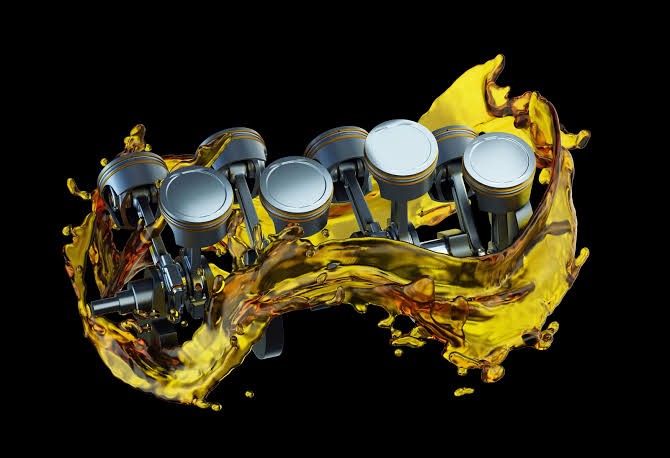Efficient fluid maintenance is essential for the optimal performance and longevity of automotive systems. RPM Oil Evacuation Systems offer a streamlined solution, simplifying the process of fluid evacuation and ensuring thorough and clean fluid changes.
Introduction:
Efficient fluid maintenance is a cornerstone of any well-operating machinery. RPM Industries introduces the revolutionary PERT processTM, a comprehensive solution that standardizes fluid maintenance operations across diverse brands, equipment types, and working conditions. By purging filters, evacuating compartments, refilling fluids, and timestamping the event, the PERT processTM ensures a safe, clean, and fast procedure that can be repeated consistently. In this article, we will explore the key features and benefits of RPM's oil evacuation systems, shedding light on how this innovative process simplifies fluid maintenance and enhances operational efficiency.
Standardizing Fluid Maintenance with the PERT ProcessTM:
The PERT processTM developed by RPM Industries serves as a game-changer in the field of fluid maintenance. Regardless of the machinery's make, model, location, or environmental conditions, this standardized process delivers a seamless fluid maintenance experience. Let's delve deeper into the key steps involved in the PERT processTM:
1. Purge the Filters:
One of the initial stages of the PERT processTM involves purging the filters. This step ensures that any accumulated contaminants, debris, or impurities within the filters are effectively removed. By eliminating these pollutants, the integrity and longevity of the machinery's fluid system are preserved, leading to improved performance and reduced risk of malfunctions.
2. Evacuate the Compartments:
The next crucial step in the PERT processTM is the evacuation of compartments. This involves the complete removal of old or used fluids from the machinery's various compartments. By evacuating the compartments, any residual contaminants, degraded fluids, or impurities are effectively eliminated, making way for fresh, clean fluids. This process ensures optimal operating conditions and prevents potential issues arising from contaminated or deteriorated fluids.
3. Refill the Fluids:
After the successful evacuation of compartments, the PERT processTM calls for the replenishment of fluids. Carefully selected and compatible fluids are added to the respective compartments, restoring the machinery's hydraulic, lubrication, or coolant systems to their optimal levels. This step ensures the proper functioning of critical components, promotes smooth operation, and helps extend the overall lifespan of the machinery.
4. Timestamp the Event:
The final step in the PERT processTM is timestamping the event. This crucial documentation serves as a record of when the fluid maintenance procedure was performed. By timestamping the event, maintenance personnel can easily track and monitor the frequency of fluid maintenance, ensuring adherence to recommended schedules. This record also becomes a valuable reference point for future maintenance tasks and aids in maintaining compliance with regulatory requirements.
Benefits of RPM Oil Evacuation Systems:
RPM Industries' oil evacuation systems offer numerous advantages, making them a preferred choice for streamlined fluid maintenance operations. Let's explore some of the key benefits:
1. Enhanced Efficiency:
The PERT processTM eliminates the need for manual, time-consuming fluid maintenance procedures. By following a standardized approach, operators can complete the entire process efficiently within minutes, reducing downtime and maximizing productivity.
2. Consistency and Reliability:
Regardless of the machinery's brand, model, or working conditions, the PERT processTM guarantees consistency and reliability. This ensures that fluid maintenance tasks are performed accurately and uniformly across the fleet of machinery, eliminating variations that could lead to inconsistent performance or equipment damage.
3. Improved Fluid Quality:
By purging filters, evacuating compartments, and refilling with fresh fluids, RPM's oil evacuation systems help maintain high fluid quality. This results in improved lubrication, reduced friction, and optimal performance of critical components, ultimately extending the lifespan of the machinery.
4. Preventive Maintenance:
The PERT processTM enables proactive and regular fluid maintenance, preventing potential issues and costly repairs. By adhering to recommendeda maintenance schedules and timestamping the events, operators can effectively track the maintenance history, identify trends, and plan future maintenance activities proactively.
Conclusion:
RPM Industries' PERT processTM revolutionizes fluid maintenance operations by offering a standardized approach that is applicable to machinery of all makes, models, and conditions. The seamless integration of purging filters, evacuating compartments, refilling fluids, and timestamping events ensures a safe, clean, and fast procedure that can be repeated consistently. By adopting RPM's oil evacuation systems, businesses can streamline their fluid maintenance processes, enhance operational efficiency, and enjoy the benefits of improved fluid quality and extended machinery lifespan. Embrace the PERT processTM and elevate your fluid maintenance practices to new heights of excellence.

Comments (0)
Please login to join the discussion
Be the first to comment on this article!
Share your thoughts and start the discussion